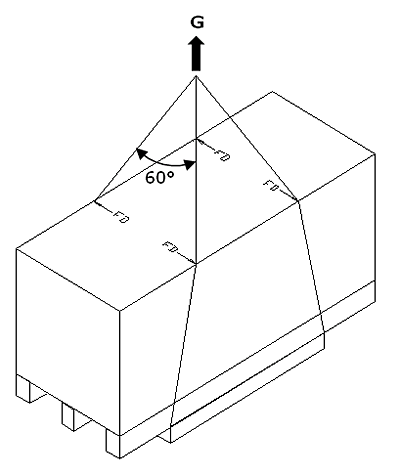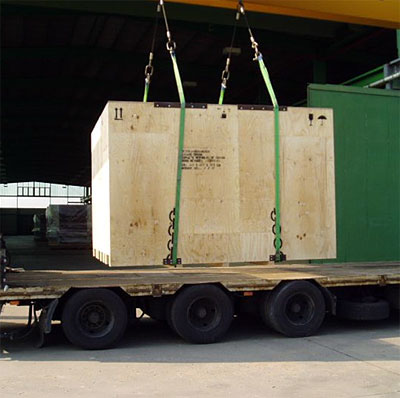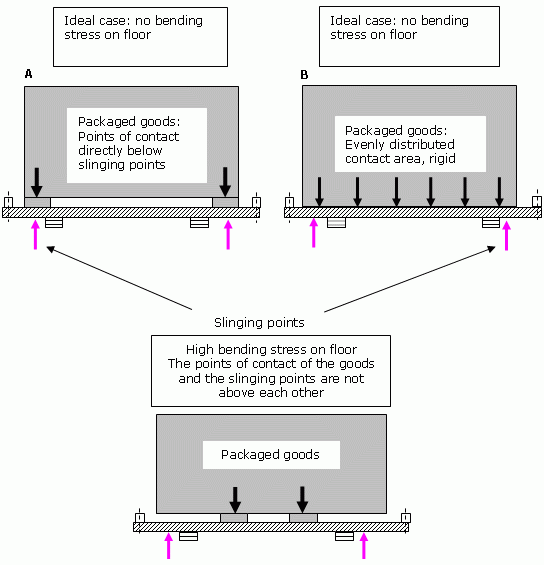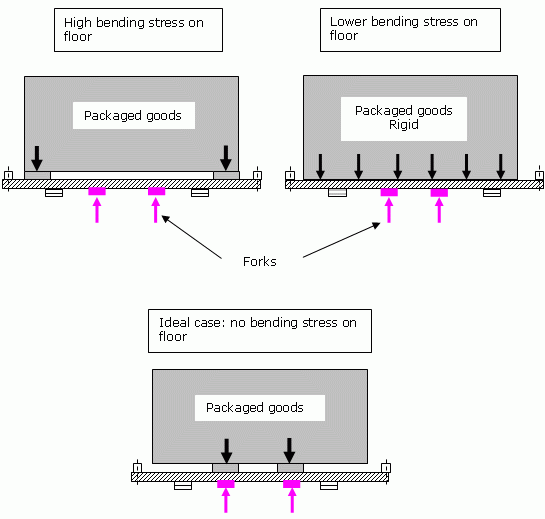The load profile remains similar, irrespective of whether steel ropes, chains or belts are used for lifting. 
Figure 3: Handling without a crossbar When handling cargo with a crane, pressure is exerted in the region of the lid between the opposing slinging points for the ropes, chains or belts. If we assume the arrangement of slinging material with an acute angle of a maximum of 60°, as shown in Figure 3, the following approximate compressive force can be calculated: FC = 0.145 · FW (FW = weight force of the package). Care must be taken to ensure that the center of gravity of the cargo is located centrally between the ropes and that the lifting force is applied above the center of gravity. The oblique tension on the ropes cause compressive force (FC) to be applied to the lid structure. This pressure must be absorbed by lid-support members positioned appropriately below the lid. These are subject to axial pressure and bending stress. Lid stringers are also required, and these are also subject to axial pressure and bending stress. Finally, fillers must be inserted between the longitudinal skids at the points at which the ropes pass round the edges (see section 6.9). In the same way as the lid stringers and lid-support members, these are subject to axial pressure and bending stresses. Suitable metal corner protectors should be attached at the points at which the ropes pass over the top edges of the package in order to dissipate the associated compressive forces: 
Figure 4: Example of handling by crane with and without a crossbar The height and width of the packages and the frictional forces of the rope are of no significance. In practice, however, a variety of opening angles for the ropes/chains must be expected. For this reason, a compressive force of FC = 0.3 · FW must always be assumed for the purposes of calculation. The floor structure of packages is also subject to stress during handling with a crane. The following examples show a variety of different loads:  Figure 5: Handling by crane, loads on the floor of the box To avoid or minimize bending stress on the floor of the box when handling by crane, the slinging points should wherever possible be located below the points of contact of the packaged goods. This also applies when handling cargo by forklift truck. 1.4.7 Loads on general cargo during handling with forklift trucks, loads on the box floor If boxes are handled using forklift trucks, bending stress can arise on the floor of the boxes, depending on the mass of the packaged goods and how they are supported. In the case of rigid packaged goods whose whole surface rests on the floor of the box, the forks of the forklift truck are directly below the point of contact, and the bending stress on the floor of the box is relatively low. If the packaged goods only rest on the floor of the box at specific points, and the forks of the forklift truck are not directly below the points at which the packaged goods are supported, these bending stresses considerably greater.  Figure 6: Handling with a forklift truck |
| Top of pageContents |
